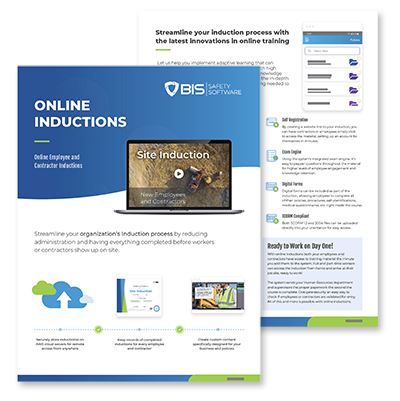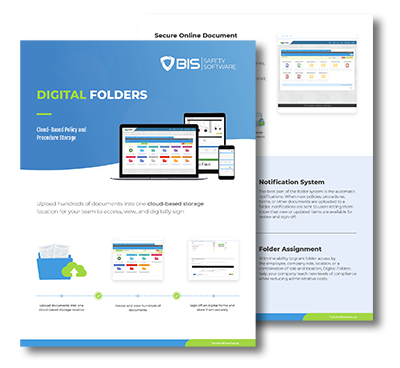In the dynamic landscape of modern workplaces, the effective management of training records has become paramount. It’s a critical component of maintaining a skilled and compliant workforce. In this article, we will explore the importance of training record management, how to keep your training records organized, and the role of learning management systems and training software in simplifying this process.
Why Training Records Matter
In today’s rapidly evolving and highly regulated business environment, training records have emerged as a linchpin in the pursuit of workforce excellence. These records are more than just pieces of paper or digital files; they serve as a dynamic reflection of an employee’s professional journey. Here’s why training records matter, and why every organisation should consider them an invaluable asset:
Regulatory Compliance: Training records are the bedrock of regulatory compliance across various industries. Whether it’s ensuring healthcare professionals meet certification requirements, guaranteeing workplace safety through OSHA standards, or adhering to financial regulations, the ability to provide well-documented training records is often a legal requirement. Failing to do so can result in penalties, legal consequences, and reputational damage.
Quality Assurance: In sectors where quality and precision are paramount, such as manufacturing and pharmaceuticals, comprehensive training records are essential. They demonstrate that employees have received the necessary training to perform their roles effectively and safely, reducing the risk of costly errors, product defects, and accidents.
Professional Development: For employees, training records serve as a testament to their professional development and growth. These records highlight the skills and qualifications they’ve acquired, making it easier to assess their suitability for new roles and promotions. Moreover, a comprehensive training record can be a source of pride and motivation for employees, encouraging them to continuously seek new knowledge and skills.
Performance Improvement: Training records enable organisations to track the effectiveness of their training programs. By assessing how well employees perform in relation to their training history, employers can identify areas where further support or development is needed. This data-driven approach promotes continuous improvement in training processes and, by extension, operational performance.
Risk Mitigation: Comprehensive training records play a crucial role in risk mitigation. When employees are adequately trained and their records are up to date, it reduces the likelihood of accidents, errors, or non-compliance issues. This not only safeguards the workforce but also protects an organisation’s assets and reputation.
Knowledge Transfer: Training records also support knowledge transfer within an organisation. As experienced employees retire or move on, their records serve as a repository of their expertise. New hires can leverage this institutional knowledge to get up to speed more quickly, ensuring business continuity and preventing a loss of expertise.

What Are Training Record Management Systems?
In today’s dynamic business landscape, the effective management of training records is a critical endeavor. Training Record Management Systems, often referred to as TRMS or Learning Management Systems (LMS), have emerged as powerful tools designed to streamline the process of recording, tracking, and maintaining employee training records. These systems play a pivotal role in ensuring that organisations maintain a skilled and compliant workforce, all while simplifying the complex task of training record management.
A Central Hub for Training Records
At their core, Training Record Management Systems are digital platforms that act as central hubs for housing, organizing, and managing training records. These systems replace outdated paper-based or spreadsheet-based methods, providing a secure, easily accessible, and highly efficient digital environment for record-keeping.
Key Features of Training Record Management Systems:
-
Document Storage: TRMS allow organisations to upload and store various types of training records, including certifications, qualifications, attendance records, and course completion certificates. These documents are securely stored and can be easily retrieved when needed.
-
User-Friendly Interface: Most TRMS come with intuitive user interfaces that make it easy for administrators and employees to navigate the system. This user-friendliness reduces the learning curve and encourages widespread adoption.
-
Automation: Training Record Management Systems often feature automation capabilities, such as the automatic recording of completed training activities and the generation of reports. This reduces manual data entry and the risk of human errors.
-
Custom Reporting: These systems offer robust reporting tools that allow administrators to generate detailed reports on training progress, compliance status, and employee skill levels. Customizable reports enable organisations to extract the precise information they require for decision-making and compliance audits.
-
Accessibility: TRMS provide 24/7 accessibility, ensuring that authorised personnel can access training records from anywhere with an internet connection. This is especially valuable in today’s global and remote work environment.
-
Security: Data security is a top priority. TRMS typically incorporate advanced security features to safeguard sensitive employee data. Access controls, encryption, and data backup are commonly integrated components.
-
Integration: Many TRMS are designed to seamlessly integrate with other software and systems. This includes integration with HR systems, payroll software, and third-party training content providers, making the management of training records more comprehensive and efficient.
The Benefits of Training Record Management Systems:
Compliance Assurance: TRMS ensure that organisations meet regulatory and industry compliance standards by providing a secure and transparent repository of training records that can be easily audited.
Efficiency and Productivity: These systems significantly reduce administrative overhead by automating tasks like data entry and report generation, freeing up time for more strategic activities.
Scalability: TRMS are scalable, making them suitable for both small businesses and large enterprises. As an organisation grows, the system can adapt to meet increased demands.
Data-Driven Decision-Making: The robust reporting capabilities of TRMS empower organisations to make data-driven decisions regarding workforce training and development.
In summary, Training Record Management Systems are indispensable tools for organisations looking to maintain well-organised and compliant training records. They not only simplify the training record management process but also offer significant benefits, including enhanced compliance, increased efficiency, and data-driven insights for better decision-making. With the ever-evolving workplace, these systems are becoming essential for organisations striving to remain competitive and compliant.
The Challenge of Training Record Organisation
For many, the challenge lies in the organization and maintenance of these records. In the fast-paced world of work, paper-based systems are no longer sufficient. It’s easy for crucial documents to be lost or damaged. Traditional approaches to training record management simply don’t cut it.
The Role of Learning Management Systems (LMS)
Enter Learning Management Systems, or LMS, which have revolutionized training record management in UK workplaces. These digital platforms streamline the process of recording, tracking, and reporting on employee training. With an LMS, you can centralize all your training records in a secure, easily accessible digital environment. This not only reduces the risk of losing critical documents but also simplifies the process of auditing and compliance checks.
Leveraging Training Software
Complementing the LMS is training software. This specialized software is designed to enhance the efficiency and effectiveness of your training programs. It allows you to create and deliver training content, track progress, and generate detailed reports on each employee’s learning journey. What’s more, it seamlessly integrates with your LMS, making it a powerful combination for training record management.
In the workplace of today, maintaining your employees’ training records is no longer a mere administrative task but a strategic imperative. Whether you’re in healthcare, manufacturing, finance, or any other industry, ensuring that your workforce is properly trained and compliant is non-negotiable. In the following sections, we will delve deeper into the practical steps of maintaining training records effectively, so your organisation can reap the benefits of a well-trained and compliant workforce.
Additional Articles

The Safety Metrics That Matter: How to Track and Improve Workplace Safety
Learn the practical steps required for conducting Field Level Hazard Assessments with our detailed guide and real-world examples. … Read More

The 5 Most Fatal Incidents in the UK
In a world that spins at the speed of a tweet, the stakes for maintaining sterling health and safety standards have never been higher. For businesses across the UK, the duty to safeguard their workforce isn’t just a box to

























